How to sound like Metallica’s James Hetfield
Here's all the gear you need to master ol’ Papa Het’s fearsome and ferocious guitar tone

There's no shortage of electric guitars and amplifiers of suitable ordnance to help you put together a metal militia-grade guitar tone similar to Metallica's James Hetfield.
Yet, for all the gear Hetfield has used through the years – from the early days with hot-rodded Marshalls, through the Mesa/Boogie MkII era and beyond – the main ingredient in his sound has always been that jackhammer right hand.
It's a force of nature – a right hand as designed by nature, but with sci-fi performance, as though the technicians at the Seiko R&'s D lab had embedded quartz crystals in the wrist. It's super accurate, punishing, and it takes practice and lots of it to bring this downstrokes up to speed so you can hit eighth-notes at 200bpm.
There is no finer rhythm guitarist in metal, which, if you consider that the riff is the lifeblood and common currency of metal, that logically positions Hetfield as its greatest guitarist. You could certainly make the case for it.
Either way, matching him note-for-note is going to take dexterity in that picking hand. Dig out the metronome, start slowly, build strength and maintain accuracy, and when you’re clocking Hetfield numbers, it’s time to get the credit card out and get shopping. First off, the guitar…
James Hetfield: The guitars
You can trust Louder
Hetfield has used a variety of guitars over the years. In the Kill ‘Em All days, he was synonymous with his white Electra Flying V replica. With a bolt-on neck, the Japanese-built V wasn’t even close to the original Gibson, but for Hetfield, a disciple of Michael Schenker, it was enough that it was white and V-shaped. After all, that right hand of his would keep it honest.
However, the V wouldn’t last. Hetfield gravitated to the Gibson Explorer and then moved to ESP guitars in 1987, picking up the ESP MX-220, an Explorer-style offset immortalised with Hetfield’s “EET FUK” sticker. Yeah, he tended to save his poetry for the studio. Hetfield tracked ...And Justice For All with the EET FUK.
Its pickup of pairing of active EMG humbuckers was perfect for the harsh, scooped tones of Justice, and Hetfield wouldn’t look back, expanding his arsenal of ESPs, with various signature models in V, Explorer and LP-styles.
And that takes us to our first pick. It’s expensive, meticulously built in the USA, and takes the Explorer template and runs with it.
No expense spared
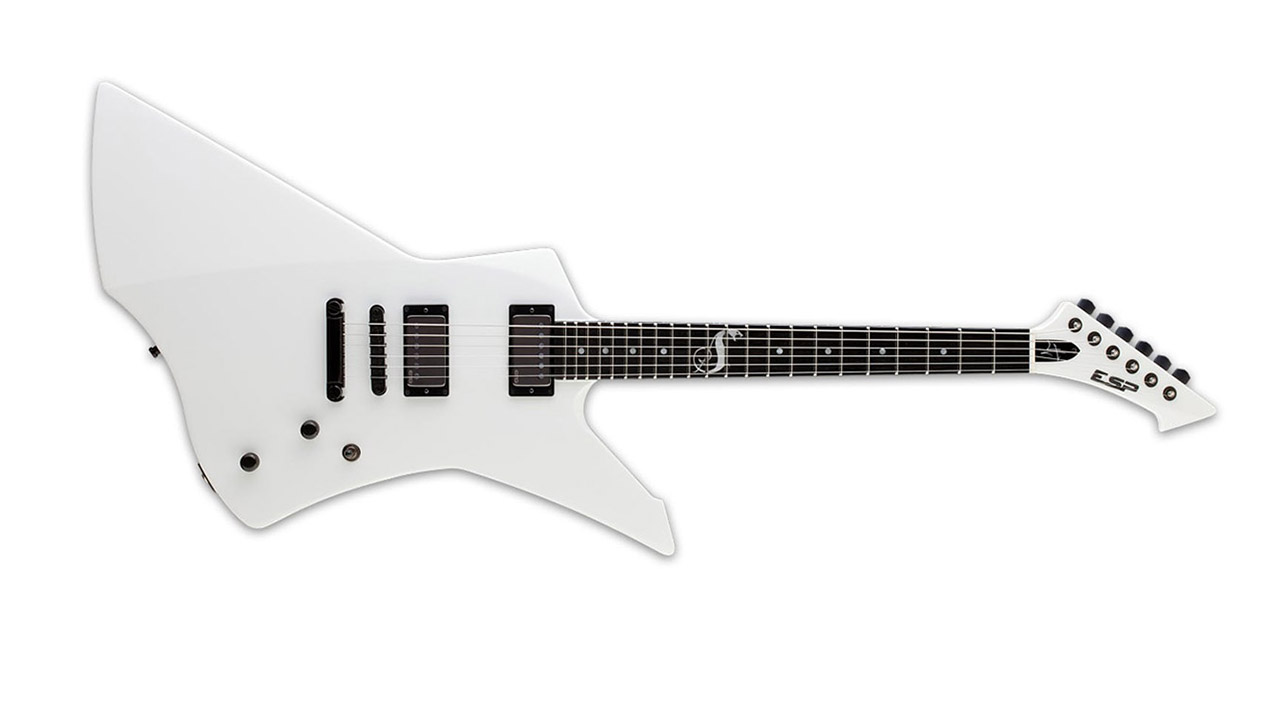
ESP James Hetfield Signature Snakebyte
The Snakebyte is the quintessential James Hetfield signature model. Like the Explorer, it has subtly offset waist, and its a big ol’ slab of mahogany with set single-piece, mahogany neck, but the contouring is more aggressive, the shape a little more dangerous.
The scale is a Gibson-esque 24.75” but the “thin U” neck profile is on-brand for ESP, offering enough support for your palm but still thin enough for speed. Sperzel locking tuners keep everything in order so you can really dig in without fear of throwing it out of tune.
Despite the uncompromising silhouette – and, frankly, you’d look ridiculous taking this to play a set of Smiths covers – the Snakebyte is well balanced, and you’ve got a set of signature EMG humbuckers to give those riffs some teeth.
On a budget

LTD EC-256
The LTD EC-256 is a change of pace, but if you are looking to get that Hetfield vibe and tone on a budget, this is a very solid option. You can get it in Black Satin or Snow White and it comes equipped with a pair of ESP Designed LH-150 humbuckers in the neck and bridge position. They are passive, but hot enough to get some gnarly crunch going on.
It has the shreddable “thin U” profile, a very shreddable 350mm fretboard radius with 22 extra-jumbo frets to reward a light touch and cater for aggressive lead styles.
The big selling point is the set-thru mahogany neck, excellent at this price, the deep insertion join making for enhanced sustain. It would also make an excellent candidate for modding, should you want to upgrade the pickups further down the line.
James Hetfield: The amplifiers
Hetfield’s tone has gone through some changes over the years. In the beginning, it was all mid-range Marshall bark. The glassy crunch of Kill ‘Em All is often said to have been cribbed from Trouble’s live settings. That could be apocryphal, a footnote of metal mythology, but either way, it remains a high-water point for metal guitar tone.
By the time Metallica were in Denmark, cooped up in Sweet Silence and tracking Master Of Puppets with Fleming Rasmussen, Hetfield was using Mesa/Boogie Mark IIC+ heads and Mesa cabinets. Some of that mid-range had been dialled back but what gave Hetfield’s tone that three-dimensional quality, that power, was the multi-tracking.
They would layer dozens of tracks on top of each other, only stopping when things started to get muddy. If you’re recording, and feel your tone is a little thing, double it, and double it again. But remember, you’ve got to keep it 100 per cent accurate or it will turn to mush.
No Expense Spared
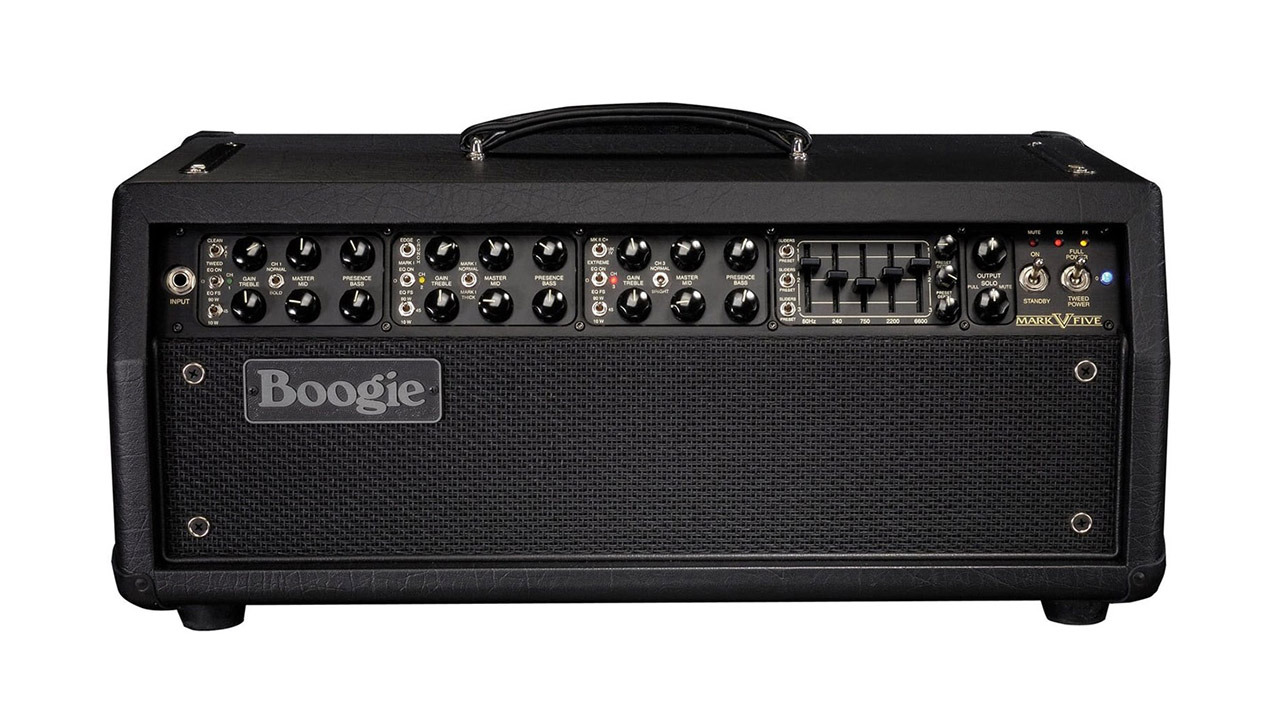
Mesa/Boogie Mark V
The Mesa/Boogie Mark IIC+ that we associate with Metallica’s foundational rhythm tone is now out of production, with the Californian titans of boutique guitar amplification now on to Mark V in the series. With three channels and switchable voicings for each, this is an amplifier that will do more than just Metallica. It's expensive, sure, but it'll be the only amplifier you’d ever need.
As with a lot of Mesa amps, it’s a tweaker’s delight, with a 3-band EQ for each channel and a five-band graphic EQ offering a comprehensive level of control over your tone. The tight, high-gain of channel three is just what you need for a Hetfield tone, but with some careful EQ you should be able to nail all eras of his tone. The switchable power output makes it suitable for a variety of contexts, the lowest 10-watt setting still loud enough to peel paint off the wall.

Mesa/Boogie Rectifier Standard Slant Speaker Cabinet
If you want to push serious air and get the most out of the Mark V head, get a matching Mesa/Boogie cabinet. It’s big, it’s unwieldy, but there’s nothing like playing loud through a half-stack. As with the Mark V, the build is impeccable, with a void-free Baltic birch cabinet housing a quartet of Celestion Vintage 30 speakers – made in the UK to Mesa’s own specifications.
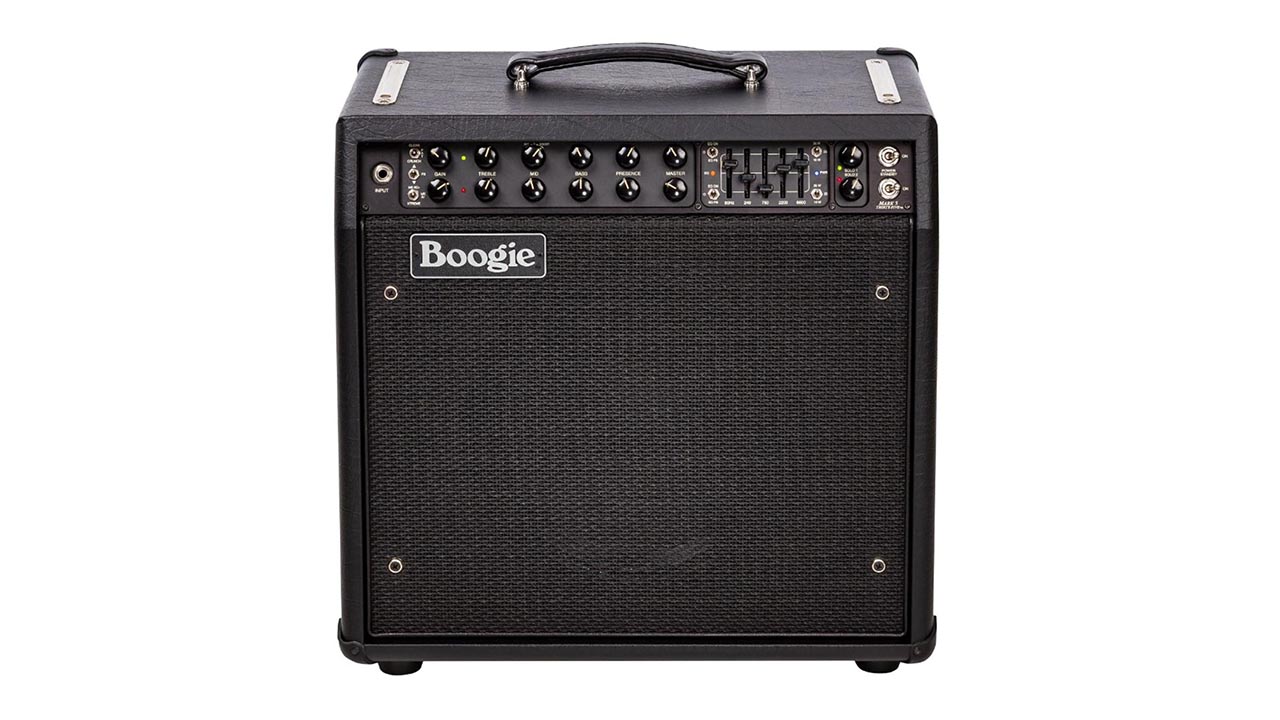
Mesa/Boogie Mark V:35 combo
If the head and cabinet option is a little too much – and y’know, it is in many respects – the Mark V:35 offers the convenience of an all-in-one 1x12 combo format. It is a phenomenal amplifier, with channel-assignable low-power settings so you can switch the power down from 35W to 25W or 10W.
There are two channels, each with three different voicings. Partner it with a dirt box and channel two’s Mark IIC+ could come in very handy for chasing vintage Metallica tones. Its Extreme mode is taken from the Mark V head, and is ideal for thick, high-gain crunch.
There are so many great features. Again, like the Mark V you’ve got a 3-band EQ for each channel then the 5-band graphic EQ. There’s a wonderful tube-driven spring reverb to add a little bit of space to your tone – ideal if playing live and you need more depth. And the CabClone DI tech makes it ideal for recording direct.
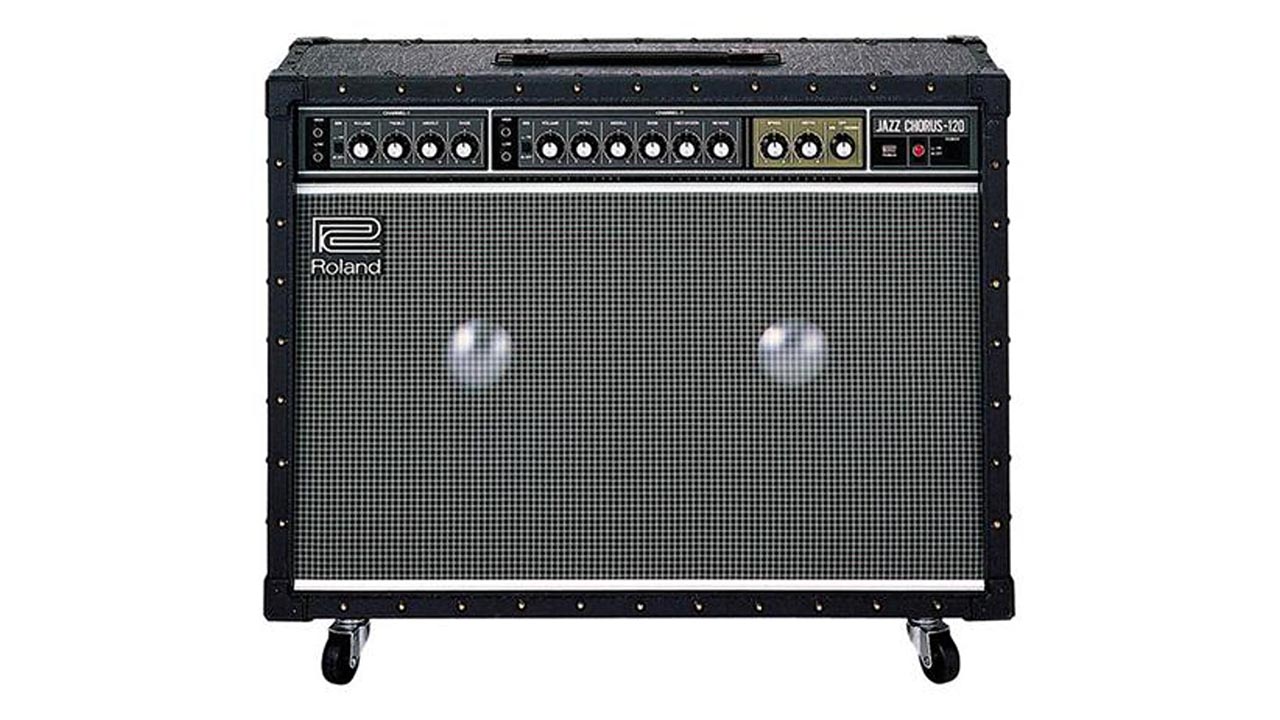
Roland JC-120 Jazz Chorus
This amplifier has been James Hetfield’s clean tones ever since Metallica toured with The Cult in 1989 and saw Billy Duffy using them. The JC-120 is really two 60-watt amplifiers in one, and has a lush onboard chorus. As a standalone amplifier, it is loud with heaps of headroom and detail.
On a budget

Line 6 Spider V 120 MkII Modelling Combo
What we need at this price is a choice of very usable clean tones and a couple of high-gain tones that we can dial in a Hetfield-esque level of crunch. The Line 6 Spider V 120 MkII is ideal for this sort of business. It represents excellent value, with 128 presets and more than 200 models of amps, cabinets and effects.
The Spider V 120 MkII also has an onboard looper, with a maximum recording time of a minute, which makes it an excellent device for training your picking hand. Record a riff to the onboard metronome, play the loop back and then practise playing the riff over the top.
Alternatively, use the jam-along drum loops. If you want to sound like Hetfield, get working on your downstrokes, all day, every day.
James Hetfield: Effects and accessories
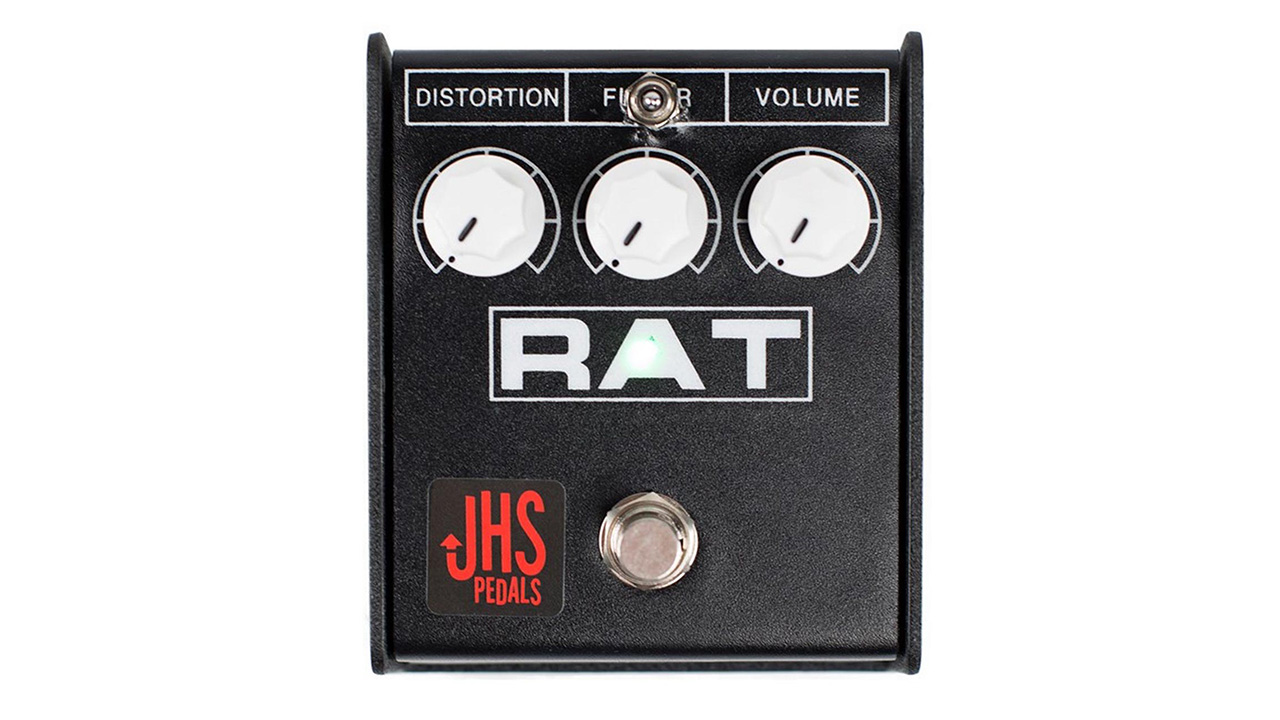
JHS Modded ProCo RAT “Pack Rat”
Hetfield used a RAT in the early days before moving onto an Ibanez Tube Screamer for some ancillary gain. Even with a high-gain amp, the RAT is a no-brainer for adding venom to your tone, and this modded version from JHS Pedals gives you three clipping options so you can shape the gain that best suits the Metallica era you’re aiming for.
Also, the components have been improved, making for quieter operation and improved clarity.

Jim Dunlop James Hetfield White Fang Flow pick
Hetfield has typically alternatied between 0.88mm and 1.00mm Dunlop picks, but the latter offers just a little more dig. If you’ve gone to all this trouble to sound like him, you’ve got to get the picks. The Dunlop Flow design has bevelled edges so you can glide across the string and a pimpled surface for enhanced grip.
The latest news, features and interviews direct to your inbox, from the global home of alternative music.
